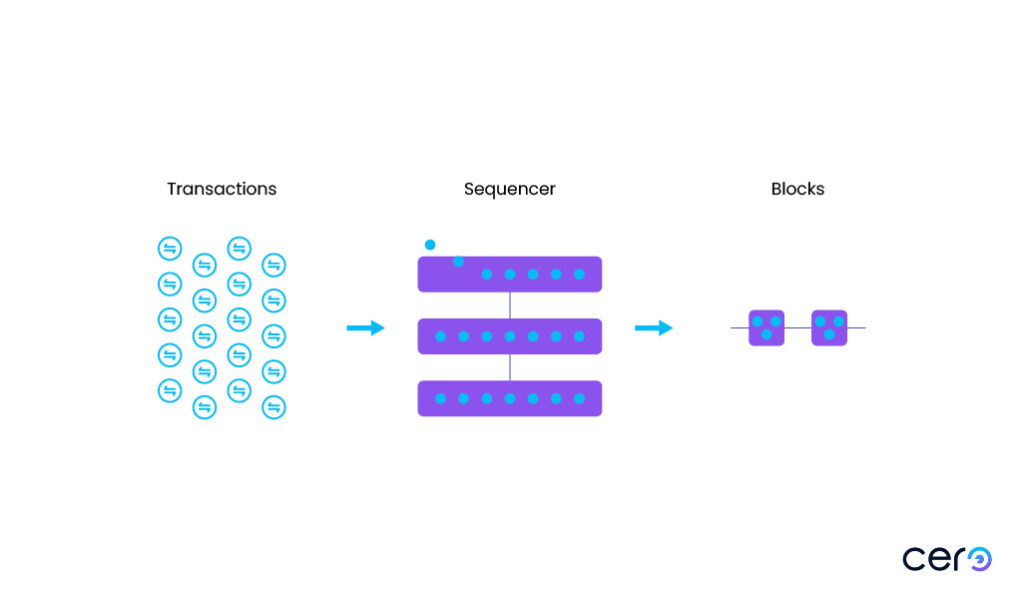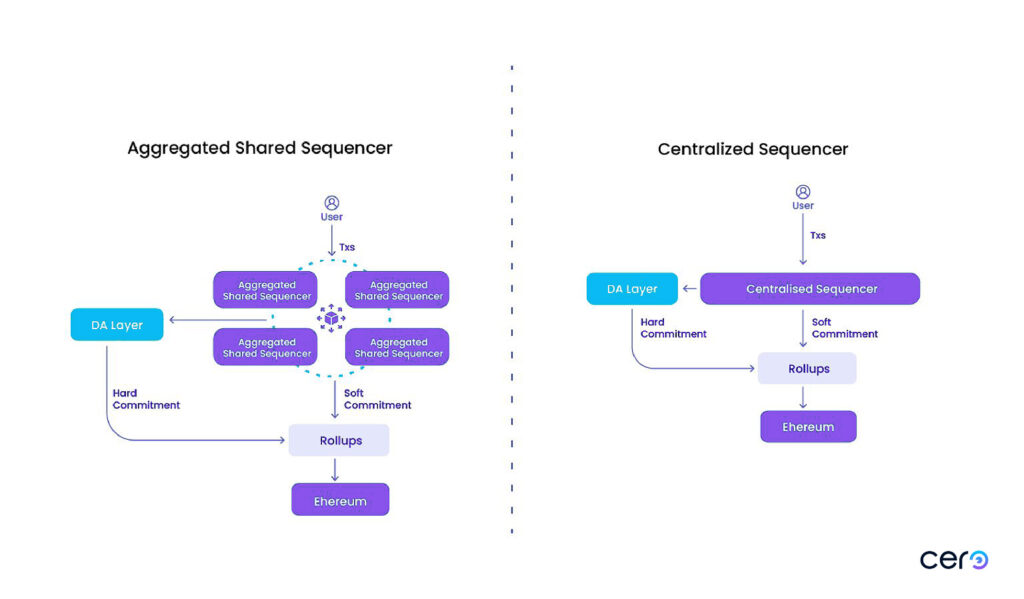The Wave of Decentralized Sequencers: Why Layer2s should Use it?


Layer 2 network’s quest for scalability and cost-effectiveness has led to the wide adoption of the centralized sequencing approach. However, as we know, centralization leads to many on-chain vulnerabilities, including the most common issue of the single point of failure. Now that decentralized sequencers are here and are receiving a good amount of response, Layers2s ought to choose decentralization to overcome the limitations of centralized sequencers and meanwhile improve performance, security, and decentralization. Throughout this article, we will discuss the importance of decentralized sequencers for Layer2 chains. However, we will first highlight the problem caused by centralized sequencers.
In a centralized setup, Layer2 sequencers are typically run and managed by a single entity, which is often the company that builds the chain. For example, Coinbase runs a sequencer for its Layer2; Base.

Although centralization has its own benefits, like quick settlement and cheap transactions, it often creates issues for many blockchain networks. Also, the idea of centralization itself contradicts the blockchain’s concept of not having a single authority as a network controller.
One incident of single point of failure occurred on the Arbitrum Rollup chain in December 2023, when the sequencer went offline for 78 minutes, causing an unexpected network outage. Although Arbitrum One is the sole rollup chain capable of addressing network issues, it took nearly a week to restore normal operations. This week-long timeframe may not be feasible for hosting a comprehensive global network. Consequently, such events can result in missed opportunities for users and undermine trust in decentralized technology. Like, if a beneficial trading opportunity arose during such a downtime, users would miss out due to the sudden offline status of the singular sequencer managing the entire network ecosystem. This could discourage users from leveraging any Layer2 rollup or appchain environments with centralized sequencers in the future.
Beside common challenges like downtime, centralized sequencer can lead to the following major risks:
Decentralization of sequencers refers to random selection of sequencers and the distribution of the transaction sequencing task across them. This means that a single entity does not control decentralized sequencers and selection of sequencers is completely unbiased. Instead, multiple entities across different geographical locations run and manage your chain. This is a critical step for eliminating all the major problems occurring with centralized sequencers that we already discussed earlier in this article.
Think of a decentralized sequencer as a permissionless blockchain, where anyone willing to become a professional validator can join the network and finalize the blocks to get rewarded for their contribution. The benefits are also similar to those of blockchain’s decentralization, which is empowerment of data ownership, enabling truthfulness in the ecosystem, immutability, censorship resistance, resilience, and unhindered robust security.
Further, the adaptable nature of decentralized sequencers encourages innovation, supporting the integration of next-gen features such as the latest concept of shared and dedicated sequencing. Here, a shared decentralized sequencer for Layer2 introduces a concept in which the ecosystem utilizes a common sequencer for the purpose of transaction ordering, aggregating, and committing them to the main chain. Speaking about dedicated sequencers, they are managed through their own network of sequencers that are accountable just to dedicate their service entirely to specific Layer2s without sharing with other chains.
Both the shared and dedicated sequencing have their own benefits and downsides that Laye 2s should consider while making a decision. For example, shared sequencers are better in terms of censorship resistance and it promotes interoperability through pooling all the transactions across interconnected L2 chains. Also, it is an affordable option due to its SaaS like model. But, shared sequencers may not match the performance of dedicated sequencers since it is used simultaneously by multiple L2s. Dedicated sequencers offer higher performance as it uses the network’s resources entirely. Plus, configurations on this model are highly flexible. The potential risks can be breakdown, lesser security and compromise in decentralization.

From our whole discussion, it is evident that decentralized sequencers are a feasible solution for Layer2 networks because they contribute to robust security, resilience, and decentralization— the core ethos of blockchain. On top of that, decentralized sequencers offer convenient interoperability across Layers, which allows for development of new-age applications such as high-performance and security-rich cross-chain DEXs, multi-chain bridge networks, and futuristic NFT platforms.
Talking about the current scenario, the concept of shared and dedicated sequencing are the preferred options across all the leading rollups. The growing trend of sequencing-as–a-service further gives a push to this. But, as mentioned, even these modes of decentralized sequencing have some downsides. Looking into the solution, we see better alternatives for rollup sequencers that will enable next-level modularity option, robust security, while ensuring decentralization that today’s appchains and rollups seek to achieve. These capabilities will further allow web3 projects and enterprises to launch modular Layer2 chains tailored to cater to specific purposes.
Sankalp Sharma is the Co-founder & VP of Engineering at Zeeve, an enterprise-grade no-code Blockchain Infrastructure Automation platform that enables easy deployment, monitoring, and management of blockchain nodes and networks.